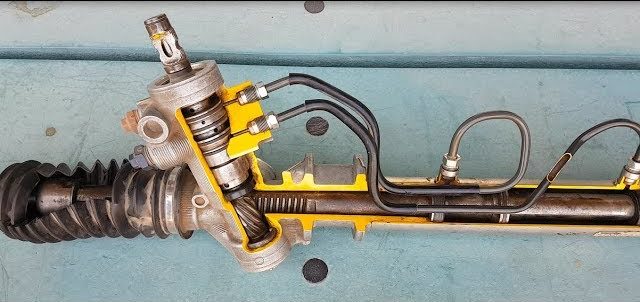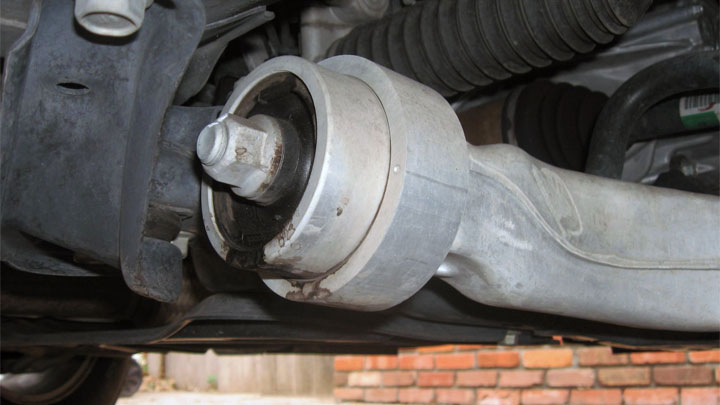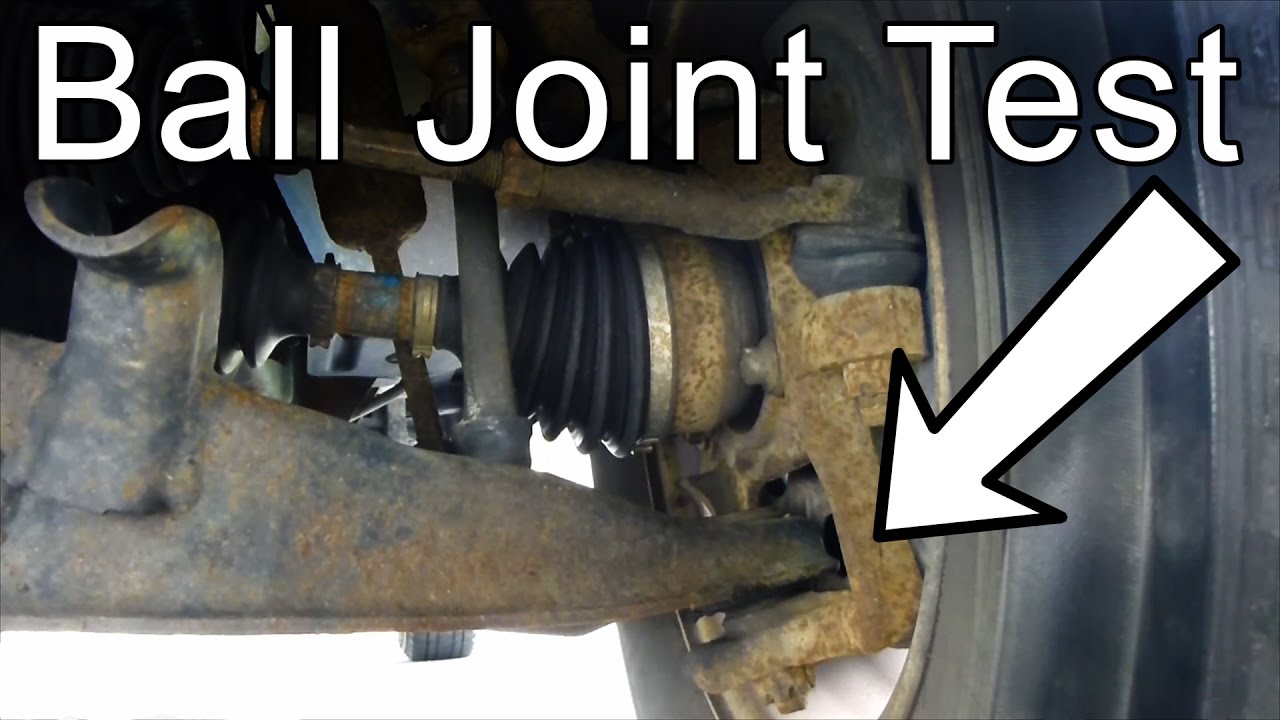In general, car owners do not notice how their vehicle sounds while driving unless it is loud and clear. Because our cars cannot tell us how they feel, they show it to us.
For instance, when your car creates a weird sound when making a turn, you should know that there is an issue with one or more components in the steering system of your vehicle.
It is an indication that you have to take it seriously and get your car fixed right away. Any delay in the service can be risky for both you and your car.
For those who don’t know, turning places tons of pressure on a couple of components of your vehicle. This leads to wearing out and causing a rubbing, groaning, or whining steering rack noise.
At first, this does not appear to be a major issue. However, you should not ignore it since these noises can be an early indication of a serious issue.
1 How Does Your Steering Rack Work?
The suspension system and steering system of your vehicle are extremely complicated. Every single thing is interconnected in one way or another.
Turning your steering wheel engages the steering rack. This needs the belt and pumps to be in excellent shape.
In addition to that, there is tons of fluid in the system as well. It also influences the suspension since your struts take additional pressure when you turn.
Furthermore, you also have to think about the strain and stress placed on ball joints used to connect the suspension and front steering parts. This includes control arms, steering knuckles, and more.
All of these parts need to support the weight of your car while being able to move freely in different directions.
The necessity for movement means there needs to be a lot of lubrication. Also, it means the possibility of wear and tears on several various components.
2 Why Does Your Steering Wheel Make Noise When Turning?
When there is an issue with a part in the steering or suspension system, they will have trouble supporting the heavy weight of your car.
Also, they should move in the ways they are supposed to.
While lubrication will help preserve the lifespan of these components, they will eventually fail down the line. The first warning indication will sound when turning the steering wheel.
Here are several reasons why your steering wheel makes noises when turning.
1) Malfunctioning Steering Pump
For those who don’t know, the job of a steering pump is to create enough pressure to support your steering system.
Thus, pump problems create a significant issue for the steering system. While it might not completely affect the steering movement, damaged pumps result in further mechanical problems.
This includes torn steering belts that can damage the entire steering system.
You’ll notice faulty steering pumps whenever the wheel becomes hard to steer. It should also create a clicking sound in the steering column whenever you steer in a stationary position.
2) Low Tire Pressure
Low tire pressure can also result in a clicking steering rack noise when turning the steering wheel right or left when stationary.
For those who don’t know, low tire pressure results in an imbalance in the weight distribution of your vehicle. Thus, the steering system experiences discomfort when trying to change the direction of the tire. This can lead to severe tension that brings about sounds.
Aside from the tire pressure, utilizing worn-out tires or combining various types of tires can influence and cause power steering issues.
3) Poor Quality of the Fluid
Aside from whining, you might also hear a sharp grinding sound when turning the wheel of a stationary vehicle.
This sign indicates that you’re utilizing the incorrect lubrication fluid. Keep in mind that today, most car manufacturers design cars that can only utilize specific lubrication.
This specific lubrication will depend on the unique minerals best for lubricating the component’s chemical compositions.
P/S fluid, Dextron, and Pentosin are some of the common examples of lubricants preferred by most manufacturers.
Utilizing the wrong steering lubrication leads to damage to the whole steering system. Thus, you have to be careful.
4) Insufficient Power Steering Fluid
One of the primary causes of a whining sound when turning steering wheels is low-power steering fluid.
Almost every vehicle utilizing a rack and pinion steering system contains the circular steering that is linked to the gearbox via a metal rack.
Furthermore, this rack has a tie rod as well to help turn the circular movement of the steering to linear movement and lower the gear impact for the wheels to turn smoothly.
If you want the system to properly work, it requires high-pressure fluid lubrication through two ports on the side of the pistons.
Aside from lubricating the column and gears, the fluid also offers excellent power for the piston to move.
5) Seizing or Worn Steering Shaft Joint
For those who don’t know, the shaft between your steering rack and the steering wheel is never 100% straight.
The shaft has what’s called a universal joint for it to turn. Usually, it is installed along the length of the shaft.
Unfortunately, the joints will deteriorate enough over time that they do not properly move and can result in stiffness or noise when turning.
The universal joint and steering shaft are typically replaced as an assembly.
6) Leaking Power Steering Fluid
The power steering fluid covers the hydraulic pressure. Aside from that, it also offers lubrication to the steering rack. This enables you to turn the steering wheel efficiently, smoothly, and easily.
If there is a leak in the reservoir of your steering system, there might not be enough steering fluid to have an effortless and smooth turn.
Aside from using more upper body strength to turn your vehicle’s steering wheel, it will also allow you to hear odd sounds when you turn your car.
7) Bad Suspension Bushings
Suspension bushings in your vehicle will not last forever, just like your upper strut bearings. Once they begin to wear, they can start to crack and fall apart sooner or later.
If these components start to deteriorate, they will probably create a sound you will not be able to ignore.
As soon as you notice that your suspension bushings are deteriorating, do not hesitate to call your local car mechanic for replacement. It’s extremely dangerous if you ignore disintegrating suspension bushings.
8) Worn Ball Joints
The job of your ball joints is to allow the movement of the steering knuckles and the suspension control arms.
It is vital that you lubricate these joints every single time to move smoothly. If these joints don’t have proper lubrication, they might begin to create crunching or squeaking sounds when you turn the steering wheel at low speeds.
9) Worn Tie Rod Ends
For those who don’t know, a tie rod is a portion of the connection that transfers movement from the steering rack out to the wheels.
A damaged or worn tie rod can often produce a knocking sound. You can easily hear this sound whenever you turn your car at lower speeds or drive over tiny bumps in the road.
2 Worn Out Shocks and Struts
The struts and shocks in your car are created to last. However, just like any component, it will not last forever.
They’ll wear down eventually. The first indication of worn-out struts and shocks is sound or additional bouncing when you pass over a bump.
If you do not replace the components, you will experience premature uneven tire wear. Aside from that, the quality of your car ride will deteriorate.
Furthermore, your car might become hard to handle after going over bumps if they are worn badly enough.
Thus, you might need a steering system repair as soon as possible.
1) Low-Quality Power Steering Rack
The job of a steering rack is to transform the rotary movement of the steering wheel into linear motion (left and right), which is transferred to the wheels and enables them to steer the car.
Because of constant steering input, steering rack damage becomes apparent. This is particularly true if you drive your car every day.
The internal seals are exposed to high or hot pressure power steering fluid and the seals become brittle and worn.
You might have a worn-out steering rack if you’re experiencing high steering effort when your car is cold but it becomes better as your car warms up.
2) Upper Strut Bearings
The upper strut bearings can be found on top of the front strut. This bearing is still part of the spring or front strut assembly.
The job of these bearings is to support the weight of the front of the car and enable the wheel and strut assembly to turn right and left.
Unfortunately, these bearings can rust over time. This is particularly true if they’re exposed to the elements.
Once they rust, they can lead to clunking sounds and often make it more difficult to turn the steering wheel.
This can make low-speed parking maneuvers extremely hard. You should have your car checked as soon as possible if you’re experiencing this kind of problem.
2) Wheel Alignment
Improper wheel alignment also causes steering problems. Checking your wheel alignment prevents your car from swerving. Wheel alignment is essential in differentiating the root cause of bad steering.
Problems with steering don’t necessarily mean changing your rack. Steering rack rebuilding consumes time and resources. Look into other possible causes like improper wheel alignment.
Conduct a wheel alignment test and check the tires for uneven wearing. It is a sign of improper wheel alignment. Solve this issue and see if your car still moves to either side.
Your wheel alignment affects the behavior of your car. Make sure to align it properly. Save yourself from the hassle of dismantling your steering assembly and unwanted rack change.
3) Fixing Your Steering Rack Sounds
Before you can determine how to fix your steering rack damage, it can be extremely useful to know why your steering rack gets noisy in the first place.
Keep in mind that the unique sound that your steering rack creates whenever something is wrong is because of its particular design.
The job of your steering rack is to take the rotary movement of the crankshaft of your engine and transform it into a high-pressure fluid that can be utilized to help you in turning the heavy wheels of your vehicle.
Your steering rack performs this by connecting a pulley and belt to a pump with rotary vanes. A rotary vane pump is created more like a fan instead of a usual pump.
Housed by the pump, you will see a rotor with blades or vanes connected to it. Whenever it spins, these blades or vanes fling the steering fluid into the pump’s outlet hose.
This process produces the high pressure required for the system.
It’s the unique design of the rotor and vane that produces the unique whine you hear whenever your power steering is not properly running.
Typically, the whine is produced by an issue with the power steering fluid that the pump is attempting to move.
The issue can be something as easy as leaking fluid that has lost enough volume or physical properties and does not pump well to tiny air bubbles in the steering fluid that foam and lead to the vanes to whine and vibrate.
If you’ve got steering rack noise, then there is a huge possibility that you have one of these issues.
If you regularly maintain your vehicle, such as changing the power steering fluid, then the sound you hear is most likely due to air bubbles in the system.
For those who don’t know, air can still get inside the power steering rack from a couple of various sources.
First, you can have air bubbles in the steering fluid because of a loose low-pressure hose. Because your pump is drawing fluid into the vanes and rotor from the return reservoir at a vacuum, it can also pull in the air if there are any loose connections from the hose.
This air can be enough to cause your pump to whine and the fluid to foam.
Loud clucks and strong screeches when trying to steer a stationary vehicle indicate a major mechanical issue in your steering system. Unfortunately, it can be hard to determine the cause of these loud noises.
You might have to hire a professional to examine your car to know which component to replace or repair. However, you can lower the sound yourself by lubricating the mechanical components of your vehicle.
Unfortunately, a steering system repair can be hard when you don’t know the main cause of the problem. That is why a lot of car owners would simply send their car to a professional mechanic.
3 How Long Does a Steering Rack Repair Take?
Most experts would suggest that you allocate at least 1-2 days for steering rack replacement. Keep in mind that removing your old steering rack and installing a new one can be highly labor intensive.
Furthermore, a couple of car models do require more time compared to other models since each car configuration is not the same. It all varies on the vehicle's year, model, and brand.
In addition to that, you also have to think about if your mechanic is available during that time and whether or not they have additional steering rack components available.
If you think you can do it on your own, there are tons of tutorial videos online on how to replace your faulty steering rack system.
However, getting a steering rack damaged fixed, and replaced is an extremely challenging and demanding task. Even if you are a DIY person, experts still do not recommend doing it on your own.
Keep in mind that a lot can still go wrong. This is particularly true if you do not know what you’re doing.
You might even end up making the problem worse if you choose to fix the car yourself. If this is the case, you can end up spending more money instead of saving some.
As much as possible, you should let your car be fixed by a professional mechanic. While it might cost you a lot of money on labor, you can still guarantee that your vehicle will be fixed right away.
4 What Should You Check After the Service from the Mechanic?
There are a couple of things that you can’t miss out on after you have your steering rack replaced. Else, your vehicle will not operate properly.
First, you have to keep in mind to examine the steering fluid level of your car and ensure they’re between the recommended level of the manufacturer.
The reason for this is that steering fluid can leak out during the replacement process. If your car does not have enough steering fluid, the steering rack won’t properly work.
Aside from that, you also have to ensure that you get a car alignment after you replace your steering rack. Else, your car won’t drive straight.
Of course, you don’t want to turn your steering wheel to 30 degrees just to have your car move straight, right? Aside from being frustrating, this can also be extremely dangerous.
Furthermore, professionals recommend that you stay away from a DIY manual alignment. It does not matter if you know what you’re doing.
Remember that car alignment services are quite cheap. So, saving money by doing the job yourself will not be worth it.
5 Conclusion
A steering rack in excellent condition should not create any type of sound when turning it, whether it’s stationary or in motion.
The kind of sound coming from your vehicle allows you or your mechanic to determine what the issue is.
It is crucial to fix these issues as soon as possible. Doing so will help you avoid further damage to your vehicle and risk causing accidents when driving.
The Previous Articles:
What Is Rack and Pinion Bushing? How To Tell If Rack and Pinion Bushings Are Bad?
Why Steering Rack Makes Noise When Turning?
How To Rebuild A Steering Rack?
What Is A Rotary Valve Power Steering Rack?
Rack And Pinion System Vs Power Steering System: What Are The Differences?
Power Steering Rack Market Analysis Report (Japan Market)
What Causes Steering Rack to Go Bad?
Design Of Car Rack And Pinion Steering Racks
What Is The Intelligent Steering Rack Used By VW, Toyota, Honda And Renault?




















This website was… how do I say it? Relevant!! Finally I have found something which helped me. Cheers!
thank you very much, you are so sweet!
Yeah bookmaking this wasn’t a risky determination great post! .
This design is wicked! You certainly know how to keep a reader entertained. Between your wit and your videos, I was almost moved to start my own blog (well, almost…HaHa!) Wonderful job. I really loved what you had to say, and more than that, how you presented it. Too cool!
Some genuinely interesting points you have written.Aided me a lot, just what I was looking for : D.